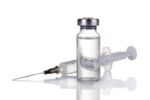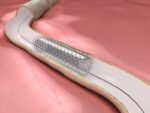Original Title: 2016 ACC/AHA Guideline Focused Update on Duration of Dual Antiplatelet Therapy in Patients with Coronary Artery Disease. Reference: Levine GN et al. Circulation. 2016 Mar 29. [Epub ahead of print]. Courtesy of Dr. Alejandro Lakowsky. The new ACC-AHAGuidelines on the optimal duration of dual antiplatelet therapy(DAPT) in patients with coronary artery disease have just been<a href="https://solaci.org/en/2016/04/01/optimal-duration-of-dual-antiplatelet-therapy-new-acc-aha-guidelines/" title="Read more" >...</a>
Triple Antithrombotic Scheme in AMI Patients undergoing PCI
Original Title: Outcomes of Patients with Acute Myocardial Infarction Undergoing Percutaneous Coronary Intervention Receiving an Oral Anticoagulant and Dual Antiplatelet Therapy, a Comparison of Clopidogrel vs. Prasugrel from the TRANSLATE-ACS Study. Reference: Jackson L.R. et al. JACC Cardiovasc Interv. 2015 Dec 21;8(14):1880-9. Courtesy of Dr Agustín Vecchia. In these last years, new and more powerful antiaggregants have<a href="https://solaci.org/en/2016/01/29/triple-antithrombotic-scheme-in-ami-patients-undergoing-pci/" title="Read more" >...</a>
REGULATE-PCI: REG1 with an unacceptable rate of severe allergic reactions
The aim of this study was to assess treatment with the new anticoagulant Pegnivacogin and its specific antidote Anivamersen compared with bivalirudin in patients undergoing coronary angioplasty. The Pegnivacogin has an affinity for factor IXa with a longer shelf life to 24 hours and Anivamersen only has an affinity for Pegnivacogin. The combination of these<a href="https://solaci.org/en/2015/06/24/congress-item-8785/" title="Read more" >...</a>
TRANSLATE-POPS: Routine measurement of platelet aggregation generates a minimal impact on the treatment setting
The high platelet reactivity is associated with adverse events after stent implantation. Current guidelines consider the measurement of aggregability as a class IIB and there is no information about the routine performance of these measurements. This was a multicenter, prospective, randomized study that included 3800 patients with myocardial infarction. The primary study end point was<a href="https://solaci.org/en/2015/06/24/congress-item-6391/" title="Read more" >...</a>
Validation of the Bleeding Academic Research Consortium
Reference: Circulation. 2012; 125:1424–143 Abstract: For many years all efforts applied to the optimization of percutaneous coronary intervention (PCI) were aimed specifically at reducing ischemic events risk through the advent of: 1) new devices (medicated stents), reducing restenosis rates, revascularization and 2) development of new drugs with a potent anti-platelet or anticoagulant such as clopidogrel or,<a href="https://solaci.org/en/2015/06/01/n-3970/" title="Read more" >...</a>
Risks and benefits of extending dual antiplatelet therapy in patients with and without MI
Original title: Benefits and Risks of Extended Duration Dual Antiplatelet Therapy after PCI in Patients With and Without Acute Myocardial Infarction. The DAPT Study. Reference: Robert W. Yeh et al. J Am Coll Cardiol. 2015, online before print. The risks and benefits of prolonged antiplatelet therapy after PCI could be different in patients presenting with AMI compared to<a href="https://solaci.org/en/2015/04/21/n-5146/" title="Read more" >...</a>
Net clinical benefit of bivalirudin in STEMI patients
Original title: Bivalirudin Versus Heparin With or Without Glycoprotein IIb/IIIa Inhibitors in Patients With STEMI Undergoing Primary Percutaneous Coronary Intervention: Pooled Patient-Level Analysis From the HORIZONS-AMI and EUROMAX Trials. Reference: Stone GW et al. J Am CollCardiol. 2015 Jan 6;65(1):27-38. The HORIZONS-AMI (Harmonizing Outcomes with RevasculariZatiON and Stents in Acute Myocardial Infarction) that included 3602 STEMI patients undergoing<a href="https://solaci.org/en/2015/01/29/n-4929/" title="Read more" >...</a>
Thrombosis with bioresorbable scaffolds: the story of DES all over again?
Original title: Percutaneous coronary intervention with everolimus-eluting bioresorbable vascular scaffolds in routine clinical practice: early and midterm outcomes from the European multicentre GHOST-EU registry. Reference: Capodanno D et al. EuroIntervention. 2014 Jul 18. Epub ahead of print The GHOST-EU registry, that included 1189 patients from 10 European centers between 2011 and 2014, is now the largest registry<a href="https://solaci.org/en/2014/07/30/n-4628/" title="Read more" >...</a>
Stent reestenosis, the only subgroup that benefits from longer double antiaggregation
Original title: Short vs. Long Term Duration of Dual Antiplatelet Therapy in Patients treated for InstentRestenosis. A PRODIGY Trial substudy. Reference: Gianluca Campo el al. J Am CollCardiol, article in press. In the study PRODIGY (Prolonging Dual Antiplatelet Treatment After Grading Stent- Induced Intimal Hyperplasia) we found that the 24 months ratio of dual antiaggregation was not<a href="https://solaci.org/en/2013/12/13/n-4159/" title="Read more" >...</a>
Rivaroxaban reduces in-stent thrombosis in patients with acute coronary syndromes
Original title: Reduction of Stent Thrombosis in Patients With Acute Coronary Syndromes Treated With Rivaroxaban in ATLAS-ACS 2 TIMI 51. Reference: C. Michael Gibson et al. J Am Coll Cardiol 2013;62:286–90. There are few contemporary studies that investigated oral anticoagulation utility in patients with acute coronary syndromes and coronary angioplasty. Rivaroxaban is an oral anticoagulant that directly and<a href="https://solaci.org/en/2013/08/23/n-3543/" title="Read more" >...</a>








